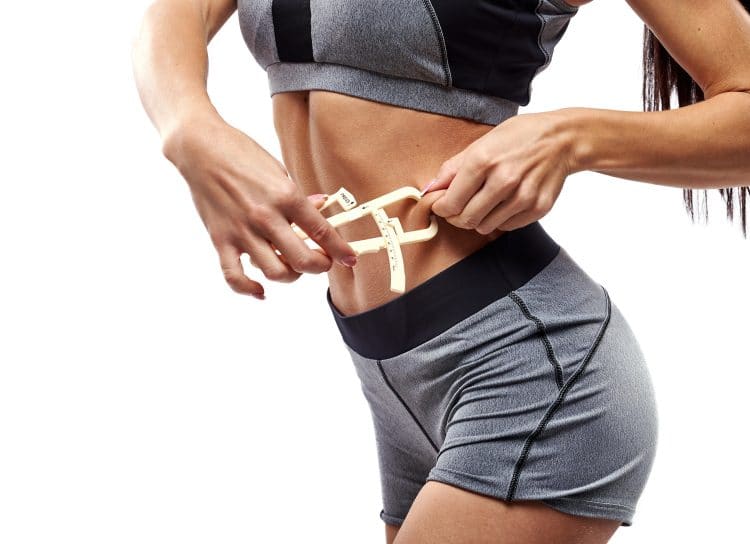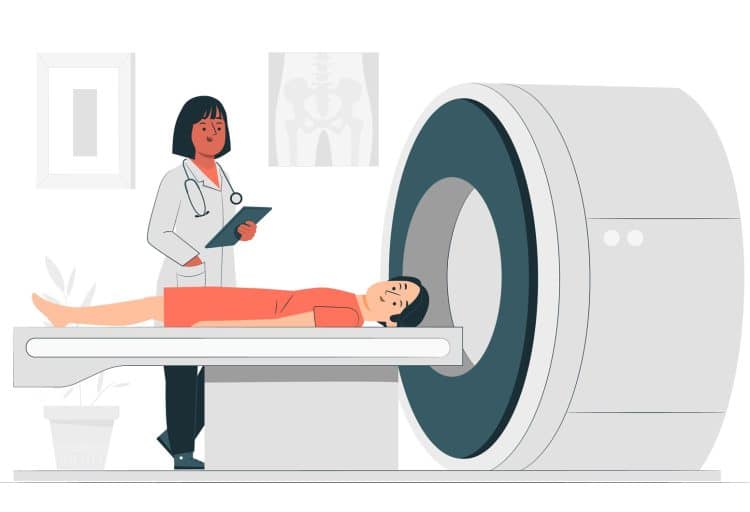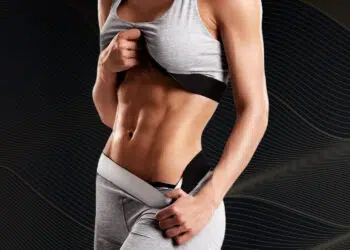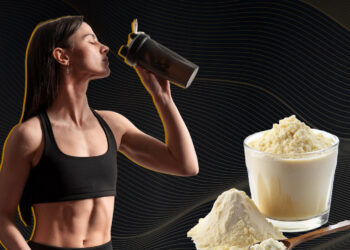A lot of exercisers work out specifically to control their weight. Some want to lose weight, while others want to avoid gaining it. As such, weekly and monthly weigh-ins are very common.
However, unless you participate in a sport where you compete in a weight category, e.g., powerlifting, MMA, or boxing, your weight might not be as important as you think. Instead, it’s what makes up that weight that matters. We call this your body composition.
When you hop on the scales, you’ll see your weight, which is the sum total of everything that makes up your body. Your weight doesn’t differentiate between fat, muscle, organs, skin, or fluids. It’s all the same to your scales!
However, when it comes to being fit and healthy, what your weight is made up of is often more important than the number of pounds on the scale display.
For example, there is a big difference between weighing a muscular 180 pounds and being 180 pounds where most of that weight is fat.
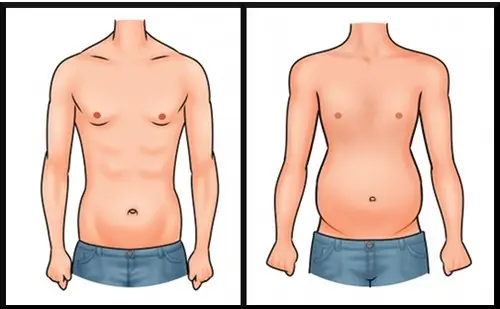
So, while weighing yourself can be helpful for measuring your progress, it can also be misleading. Not losing weight could also make you feel like a failure, even if you are actually making progress that doesn’t show on the scales.
Level Up Your Fitness: Join our 💪 strong community in Fitness Volt Newsletter. Get daily inspiration, expert-backed workouts, nutrition tips, the latest in strength sports, and the support you need to reach your goals. Subscribe for free!
For instance, losing muscle would result in weight loss. Still, it could leave you feeling weaker, less athletic, with a slower metabolism, and classed as skinny fat. You could also be less hydrated than usual, perhaps because you’ve just had a sweaty workout.
So, while it can be useful to track your weight, it would be a mistake to measure your successes and failures by what’s showing on your scales.
In this article, we reveal how to weigh yourself without scales, plus alternative methods for tracking your body composition and progress.
How to Weigh Yourself Without A Scale
Whether you want to lose fat, gain muscle, or maintain your current body weight or composition, use these methods to track your progress.
1. The Seesaw Method

The reality is that it’s all but impossible to determine your weight without scales, and why would you not have a set in your bathroom anyway?!
But, on the off chance you don’t have scales, there are none at your gym, and the scales at the drugstore are broken, you can estimate your weight using a seesaw and a pile of weights.
Firstly, you’re going to need some counterweights. This can be anything you know the weight off. For example, weight plates from the gym are a good option, or you can use full water jugs, bags of sand or cement, bags of sugar, flour or rice, or any other known weight.
Next, sit on one end of the seesaw and ask your partner to start adding weight to the other end. Gradually, as the weight begins to balance, the seesaw will level out. Make a note of how much weight it took to balance the seesaw, and that’s what you weigh.
Needless to say, this is not exactly the most practical method, but it will reveal your actual weight in much the same way as a scale. This could also be a fun project to do with your kids.
2. Tape Measure
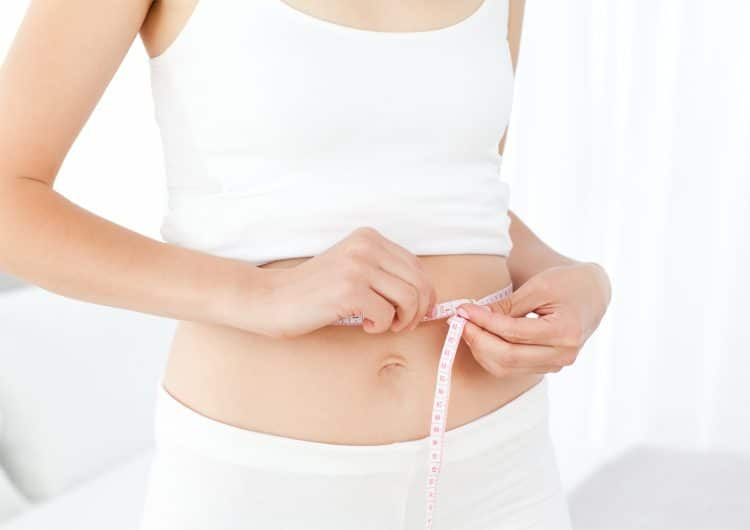
While measuring your waist won’t reveal your weight, it will tell you if you are losing fat. Your waist has very little potential for muscle growth. Unless you’re a bloated belly bodybuilder, that is!
As such, if your waist starts to shrink, it’s a fair assumption that your fat stores are decreasing, and you’ll probably be losing weight, too.
In addition, losing fat from your abdomen is associated with improved cardiovascular health and a lower risk of metabolic syndrome and diabetes.
Unfortunately, there is very little you can do to specifically target abdominal fat. But, if you eat right and exercise regularly, you should have no problem shedding those unwanted jelly rolls.
3. Clothing Comparisons
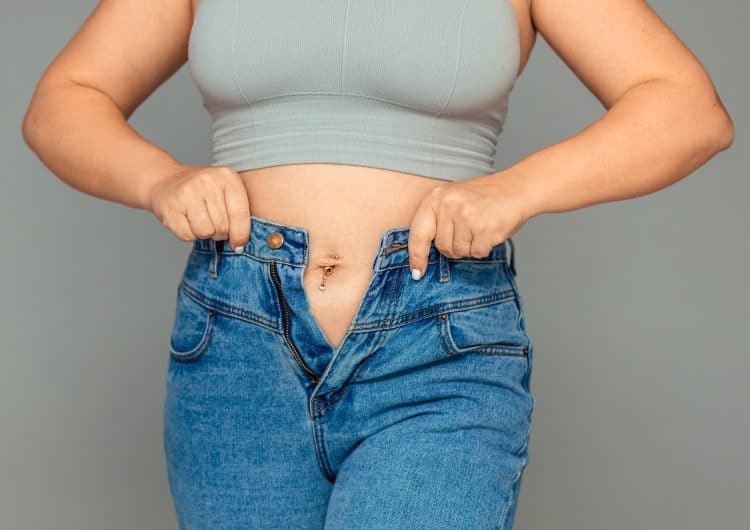
If your clothes start to feel looser, especially around the waist, hips, and thighs, it’s safe to assume you’re losing fat. Alternatively, if your clothes are starting to feel a little tighter than usual, you are probably getting fatter.
A lot of people have a “fat” wardrobe and the “thin wardrobe.” This is a mistake. It means you have easy access to clothes that fit, even if you’ve been going crazy at the all-you-can-eat buffet lately.
If you lose weight, ditch your fat clothes as an incentive to avoid regaining the weight you undoubtedly worked so hard to lose.
As soon as you feel your pants getting a little tighter, get your workout and diet back on track to avoid gaining back the fat you’ve lost. And don’t just upsize your wardrobe. That’s basically an admission of defeat.
4. Progress Photos
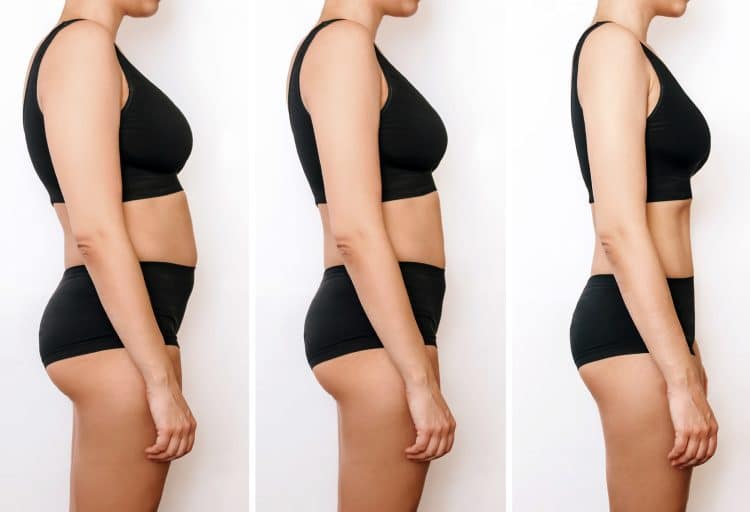
Most people lose and gain weight very slowly. In fact, even if you look at yourself in the mirror every day, you probably won’t be able to see much change in how you look.
One way around this problem is to take a series of photos. By comparing one image to the next, you’ll be able to see how your body is changing and how you are progressing. As you lose fat, your muscle definition will improve, and you’ll see your waist shrinking.
Make this method as easy and effective as possible by:
- Wearing the same clothing for each photo, e.g., bathing suit
- Using the same camera
- Using the same lighting
- Taking the photos in the same place, e.g., your bathroom
- Taking the photos from the same distance
- Not using filters
Ideally, you want to replicate the same conditions for all photos, so you are the only thing that changes.
5. Use an Online Body Composition Calculator
There are several ways to estimate your body composition, but most are either invasive or require specialist equipment. However, there are some more straightforward methods, such as using an online body composition calculator.
These calculators determine your body composition using scientific formulas and from readily available information, such as your waist measurement and current weight, assuming you know it that is!
Level Up Your Fitness: Join our 💪 strong community in Fitness Volt Newsletter. Get daily inspiration, expert-backed workouts, nutrition tips, the latest in strength sports, and the support you need to reach your goals. Subscribe for free!
It’s important to stress that these calculators provide an estimate of your body composition and are not 100% accurate. That said, they’ll give you a pretty good idea of your current body fat percentage, and you can use them to track your progress.
Four options include:
- Fitness Volt Body Fat Calculator
- YMCA Body Fat Calculator
- Body Fat US Navy Calculator
- Lean Body Mass Calculator
6. Skinfold Assessment
Some gyms, health clinics, and personal trainers offer skinfold body composition assessments. This involves pinching and then measuring the thickness of skinfolds in various places around your body.
Some skinfold assessments involve just 3-4 testing sites, while others use ten or more. The more skinfolds that are measured, the more accurate the test will be, but it’ll also be more invasive.
Skinfold calipers are readily available online. However, you can’t do your own measurements, so you’ll still need to find someone to measure your skinfolds for you. Taking skinfold measurements is a skill, and some people are better at it than others. Tester error will have a significant impact on your results. Consistency is the key to generating useable readings.
Skinfold calculators include:
- 3 Skinfold Body Fat Calculator
- 4 Skinfold Body Fat Calculator
- 7 Skinfold Body Fat Calculator
- Body Fat Skinfold Calculator
7. Bioelectrical Impedance Analysis (BIA)
Bioelectrical impedance analysis involves passing a very low, imperceivable electric current through your body and measuring the resistance to the current flow. Tissues that contain a lot of water (muscle, blood) conduct electricity well, while tissues with very little water (bone, fat) do not.
The machine estimates your body fat percentage and composition by measuring the impedance.
There are several different types of devices for BIA, including hand-held units, step-on scales, and BIA machines that pass the current through your entire body. This last type is usually the most accurate. Some units can be linked to apps for easier tracking of results.
While BIA is non-evasive, the accuracy of the test is affected by hydration and electrolyte balance. The best way to get useable results is to do several tests over a couple of days to establish an average reading. You can then repeat this process in a couple of weeks for comparison.
8. Hydrostatic Weighing
The basic premise of hydrostatic weighing is that fat floats while muscle and bone do not. By weighing you on dry land and then again in water, it’s possible to estimate your body fat percentage and lean body mass.
Hydrostatic weighing is considered to be very accurate and was once the “gold standard” by which other methods were compared. However, it’s since been superseded by MRI and similarly high-tech methods.
You need specialist equipment, an appropriate pool, a trained operator, and a willingness to be submerged in water for hydrostatic weighing. Things like undigested food, intestinal gas, and an inability to completely empty your lungs of air can all result in skewed results.
9. Dual Energy X-Ray Absorptiometry (DEXA)
DEXA uses two types of X-rays to measure and differentiate between muscle, fat, and bone. This is a very low dose of radiation and relatively safe. DEXA tests take around 12-minutes and are very accurate and mostly non-invasive. But, on the downside, they can be expensive and are not widely available.
That said, if you REALLY want to know what your body is made of, a DEXA scan could be the best option.
10. Magnetic Resonance Imaging (MRI)
MRI machines are diagnostic tools usually found in hospitals. They can be used to take an accurate three-dimensional picture of your body to determine exactly what your body mass is made up of.
On the plus side, MRIs are very accurate and will give precise body composition results. However, such tests are costly, not readily available, very noisy, claustrophobic, and time-consuming.
But, just like DEXA scans, if you are keen to know your precise body composition, an MRI will provide you with the results you want.
11. Air Displacement (Bod Pod)
Air displacement is a quick, easy and accurate way to assess body composition. You simply strip down to your underwear, get into a unit called a Bod Pod, which is pressurized, and the amount of air displaced is measured.
From this, the machine estimates your body composition.
While easy to use and accurate, Bod Pods are very expensive and relatively rare, so not many people will have access to this type of equipment.
12. Near-Infrared Interactance
Although not the most accurate method, near Infrared Interactance is one of the least invasive and most readily available ways to measure body composition. An infrared beam is shone into your upper arm, and the amount of light reflected back at the sensor is measured.
The difference between emitted and reflected light is then used to calculate your body composition. The assumption is that the amount of fat you have on your upper arm is representative of the rest of your body, but this is not always the case. As such, this method is very much an estimate, and may be inaccurate for some users.
Weighing Without A Scale – Wrapping Up
It’s often said that you cannot manage what you cannot measure. Weighing yourself can be motivating and reassure you that your workouts and diet are producing the results you want.
However, there is more to getting in shape than just losing weight, and the scales only reveal a small part of what is happening in your body.
That’s why body composition is so important. It provides a much fuller picture of how things are going. Losing weight is not always a good thing, and gaining weight is not necessarily bad. The relationship between fat and muscle is far more critical, and the scales don’t reveal that ratio.
So, by all means, weigh yourself, or even break out the weights and hop on a seesaw if you don’t have access to scales. But, if you want to know more about how your diet and workouts affect your body, use one of the other methods to determine your body composition.

